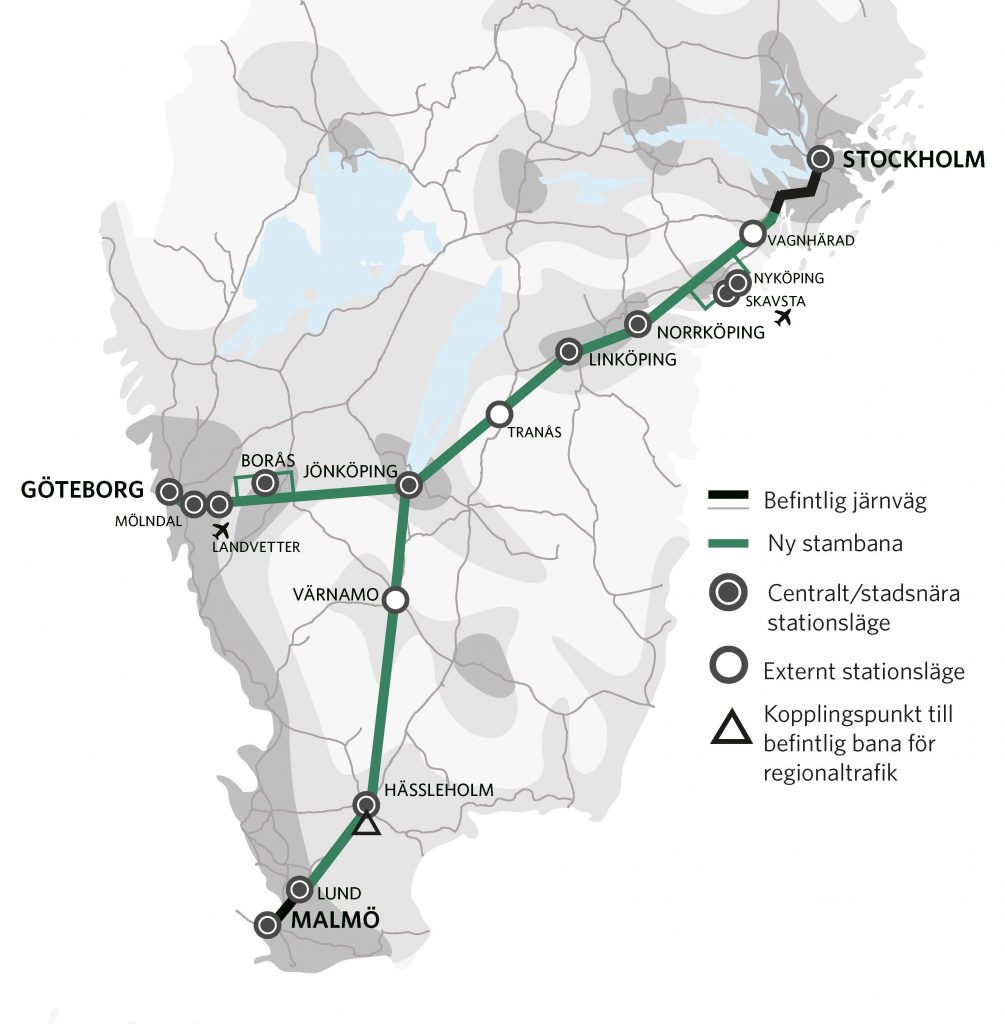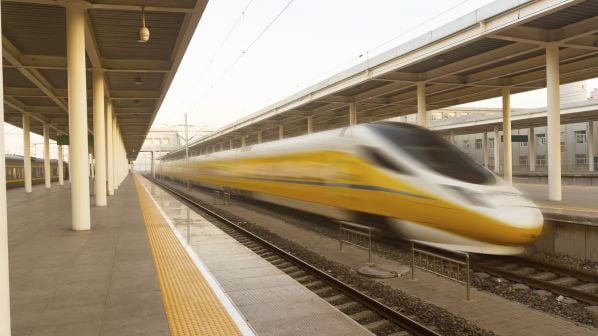SWEDISH infrastructure manager Trafikverket has completed a study of the development of a network of main lines in the south of the country, which is designed to relieve pressure on the existing network as well as segregate high-speed inter-city from regional passenger services and freight.
The government commissioned Trafikverket in June 2020 to investigate the construction of a network connecting Stockholm, Gothenburg and Malmö. The project has a budget of SKr 205bn ($US 24bn) and will expand and connect the East Link, Gothenburg - Borås and Hässleholm - Lund projects which are underway.
However, the study estimated the cost of the network at SKr 295bn, with a margin of error of SKr 50bn.

Trafikverket awarded Jacobs a framework contract in March 2020 to provide strategic consultancy services for the high-speed network.
As well as investigating the main proposal, Trafikverket also developed four alternatives. All four alternatives would use ballasted track with an operating speed of 300km/h, while the base proposal has an operating speed of 320km/h using slab track, apart from the Gothenburg - Borås and Järna - Linköping sections which would be 250km/h with ballasted track.
In order to meet the budget constraints, the number of stations and station locations in the main proposal would need to be reviewed, says Mr Ali Sadeghi, Trafikverket programme director for new main lines. “The opportunities for large cost savings in the current system design are very limited,” he says.
While the alternative proposals are not shovel-ready, and Trafikverket is not advocating that any one of them should be selected, Sadeghi says they were developed to illustrate the differences in cost and impact that could be achieved.
Each proposal would have three lines intersecting at Jönköping. The largest variances are found in the distance the lines would run into the city centres, and how they would connect with the regions they run through. While extending the lines into the city centres would contribute to local and regional economic growth, locating the stations at the edge of the cities would reduce end-to-end journey times.
“All alternatives provide large capacity additions and contribute to regional and national growth,” Sadeghi says. “But they also contain a balance between different benefits, for example from a regional and national perspective.”
However, Sadeghi also warned that a decision on which proposal to pursue needed to be made.
“For work to continue according to the current schedule, there is no room for a retake,” he says. “The longer the planning process takes based on the current focus, the greater the consequences of a possible change of direction.”
For detailed data on high-speed projects around the world, subscribe to IRJ Pro.

